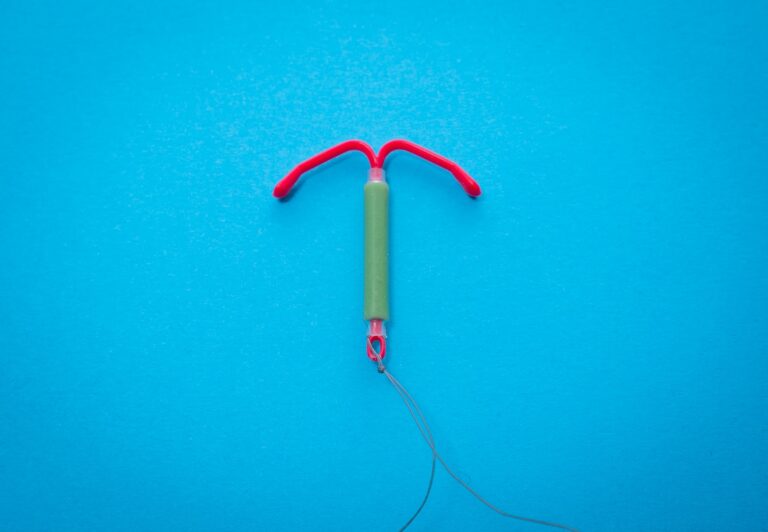While it might feel weird when your penis brushes up against the thin strings of a Mirena or Liletta IUD, sex won’t displace your device. Even if you’re in the throes of orgasm, your IUD is pretty unlikely to move out of its spot (what’s called expulsion) or poke through your uterus walls (called perforation).
It’s also very rare for a sex to cause a bacterial infection.
1. Don’t overdo it
If you get an IUD, your doctor will insert it into the opening of your cervix (your uterus’s lower canal). You might feel some cramping or pain during this. It can help to take over-the-counter pain medication, like ibuprofen, before you go to the doctor to reduce discomfort.
Most IUDs have a string at the bottom, which allows doctors to check for or remove the device. It is important not to pull on this string. Pulling on it can cause the IUD to move or even come out, which could lead to pregnancy. It’s also possible to develop a serious pelvic infection called pelvic inflammatory disease (PID) when the IUD comes out.
If you think your IUD has come out, use a back-up birth control method (like condoms) and tell your doctor. PID can cause severe problems and may require surgery. Your doctor can give you antibiotics to treat PID. They may also ask you to change your tampon more frequently if you have PID. They can also trim the string, so it only hangs down about an inch or two into your vagina.
2. Don’t go overboard
While it’s possible for an IUD to fall out if your doctor didn’t put it in correctly or you have a condition like fibroids that cause it to shift, it’s super rare that sex would displace it. If your IUD hasn’t shifted, it’s not going anywhere, and you can feel it by checking its strings (although doctors don’t always recommend this DIY method of doing so).
IUDs are 99 percent effective at preventing pregnancy, and both the hormonal Mirena and the non-hormonal ParaGard become active as soon as they’re inserted. Spotting or bleeding sometimes happens in the first 3 to 6 months after IUD insertion, but it usually stops.
It’s also worth noting that, as with any sex, you should be mindful of how deep your partner goes during penetration and make sure to use a condom if you’re using an IUD. Also, while it’s not necessary for IUD users to wear a bra or a pantyliner, doing so could help prevent an infection. Also, sex with a sex toy that has a hook-type tip isn’t safe because it could pull out your IUD.
3. Don’t use sex toys
If you have a Mirena IUD, avoid using sex toys that can cause damage to the uterus. This is particularly important in the first few days after a ring has been placed, when it’s still getting used to its new home and is vulnerable to inflammation and other health problems. Using sex toys with a hook-type end can also irritate the uterus and can potentially dislodge the ring from its original position, which will lead to a loss of contraceptive efficacy.
You should not feel the plastic strings of a Mirena IUD during vaginal sex, although some women have reported that they can feel the strings with a penis. The healthcare professional who inserts the IUD will likely trim the strings to a shorter length, and they should stay tucked up behind your cervix, where they should only poke out slightly.
It’s highly unlikely that a sex toy or a penis will yank on the IUD strings and dislodge it, says Greves. Even ob/gyns, who have the benefit of being familiar with IUDs and their strings, use a tool when they remove them from patients, she adds.
4. Don’t use tampons
Mirena is an intra uterine device (IUD) that releases small amounts of the progestin levonorgestrel into your uterus to prevent pregnancy. It’s a long-acting, reversible form of birth control that can be used for up to 10 years. It can be inserted in the doctor’s office and takes just minutes to do.
You can use tampons after your IUD is placed, but it’s important to know that the tampon’s string could get caught up in the IUD strings and cause it to fall out. This is a very rare thing that can happen, but it’s worth being aware of.
When you get an IUD inserted, you’ll lie down on the exam table and have the doctor put a speculum in your vagina and clean your cervix with an antiseptic liquid before lining up your cervix and uterus to insert it. Your physician will probably trim the IUD’s strings a little during this visit, too. This will make them more difficult for you or your sexual partner to feel during penetrative sex. This also reduces the chance of the IUD getting displaced or expelled, though that can still happen very rarely.
5. Don’t do anything that could hurt your partner
You can expect some cramping and spotting after getting an IUD, especially in the first three to six months. Your periods may also be heavier, longer, or more painful in these early months. But if you’re experiencing severe pain or bleeding, it could mean the IUD has moved out of place.
That’s why it’s important to check your IUD’s position regularly, and always use a backup method of birth control. It’s also a good idea to call your doctor right away if you experience persistent pain, spotting, foul discharge, or fever.
Luckily, it’s unlikely that sex will dislodge your IUD—and even if it did, it’d be more likely to fall out of the uterus than the vagina or cervix. But because your IUD sits inside your uterus, it’s possible your partner might feel the strings during penetrative sex, and that can be uncomfortable or even painful.2 But fortunately, the strings are designed to extend beyond your cervix, so they won’t touch a penis or sex toy.
See Also:



